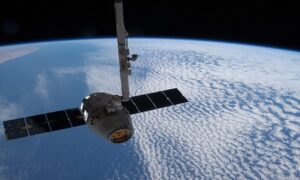In an era where global connectivity is the lifeblood of businesses, the maritime and offshore sectors face unique challenges in maintaining reliable communication networks. However, with the advent of satellite communications services, a revolutionary solution has emerged, providing seamless connectivity and enabling efficient operations at sea.
This comprehensive blog post delves into the significance of satellite communications in maritime and offshore operations, exploring the benefits they bring, the challenges they overcome, and the latest innovations that are transforming the industry.
The Importance of Connectivity in Maritime and Offshore Operations
In today’s interconnected world, connectivity plays a vital role in the success of maritime and offshore operations. The ability to maintain constant communication between vessels, offshore rigs, and onshore facilities is crucial for optimizing operations, managing logistics, and ensuring the safety of crew members. Reliable satellite communications solutions like IEC Telecom have become an indispensable lifeline for these industries, bridging the gap between remote locations and the rest of the world.
Understanding Satellite Communications
How Satellite Communications Work?
Satellite communications harness a network of geostationary satellites positioned in orbit around the Earth. Acting as relays, these satellites receive signals from ground-based stations and transmit them back to their intended destinations. This process involves the seamless transmission, reception, and retransmission of signals, enabling communication over vast distances.
Types of Satellite Systems in Maritime Communication
There are two primary types of satellite systems utilized in maritime and offshore communication: geostationary satellite systems (GEO) and non-geostationary satellite systems (NGSO). GEO satellites remain fixed relative to the Earth’s surface, providing continuous coverage over specific regions. In contrast, NGSO satellites operate in lower orbits, forming interconnected networks to achieve global coverage.
Advantages of Satellite Communications in the Maritime Industry
Global Coverage and Seamless Connectivity
Satellite communications provide maritime and offshore operators with unmatched global coverage, guaranteeing uninterrupted connectivity, regardless of their vessel’s location. This seamless connection empowers these operators to establish and maintain constant links with onshore facilities, headquarters, suppliers, and customers, enabling efficient decision-making and minimizing operational delays.
Furthermore, satellite communications unlock a world of possibilities, including the utilization of video surveillance software with advanced remote access and the implementation of video conferencing solutions for remote areas to ensure a seamless global coverage.
Reliable Communication Channels
The reliability of communication channels is paramount in the maritime industry. Satellite communications provide a robust and dependable means of communication, enabling real-time voice, data, and video transmissions. This reliability ensures that critical information is transmitted without interruptions or delays, allowing for effective coordination and improved situational awareness.
Enhanced Safety and Emergency Response
In maritime and offshore operations, safety is of paramount importance. Satellite communications play a crucial role in enhancing safety and emergency response capabilities. By enabling constant communication with emergency services and providing access to weather updates and navigational information, satellite systems contribute to proactive risk management and swift emergency response.
Increased Efficiency and Operational Productivity
Satellite communications drive efficiency and productivity in maritime and offshore operations. Through seamless connectivity, operators can optimize voyage planning, streamline logistics, and enhance supply chain management. Furthermore, satellite-enabled remote monitoring and diagnostics enable proactive maintenance, reducing downtime and increasing overall operational efficiency and maritime cyber security.
Challenges in Implementing Satellite Communications
Cost Considerations
Implementing satellite communications can present financial challenges, especially for smaller maritime businesses. Initial investments, including satellite equipment installation and ongoing service costs, must be carefully evaluated. However, it’s important to consider the long-term benefits and cost savings that result from enhanced connectivity and operational efficiency.
Bandwidth Limitations
Satellite bandwidth limitations can pose challenges in transmitting large volumes of data. Bandwidth management and optimization strategies, such as prioritizing essential communication needs and employing compression techniques, help mitigate this challenge and ensure efficient data transmission.
Innovative Solutions Driving Satellite Communication Advancements
High-Throughput Satellites (HTS)
High-Throughput Satellites (HTS) represent a significant advancement in satellite communication technology. These satellites offer increased bandwidth capacity, enabling higher data transmission rates and improved connectivity.
HTS systems leverage advanced spot beam technology, allowing for targeted coverage and efficient utilization of satellite resources. This results in faster data speeds, enhanced performance, and improved user experience for maritime and offshore operations.
Low Earth Orbit (LEO) Satellites
Low Earth Orbit (LEO) satellites have emerged as a game-changing innovation in satellite communications. These satellites operate at lower altitudes, resulting in reduced signal latency and improved responsiveness.
LEO satellite constellations, consisting of numerous interconnected satellites, provide global coverage and offer the potential for enhanced data rates and lower costs. LEO satellites are paving the way for a new era of satellite communications, revolutionizing connectivity at sea.
Hybrid Systems and Network Optimization
Hybrid systems combining the strengths of different satellite technologies are becoming increasingly prevalent. By integrating GEO, NGSO, and LEO systems, hybrid solutions optimize network performance, reliability, and coverage. Additionally, advanced network optimization techniques, such as intelligent routing algorithms and load balancing, further enhance the efficiency and effectiveness of satellite communication systems.
Future Trends in Satellite Communications for Maritime and Offshore Operations
Internet of Things (IoT) Integration
The integration of satellite communications with the Internet of Things (IoT) holds immense potential for the maritime industry. IoT sensors and devices can be deployed on vessels and offshore platforms, collecting real-time data on various parameters such as equipment performance, environmental conditions, and fuel consumption. Satellite connectivity enables seamless transmission of this data, empowering operators with valuable insights for proactive decision-making and optimized operations.
Artificial Intelligence (AI) and Automation
Artificial Intelligence (AI) and automation are set to transform satellite communications in the maritime and offshore sectors. AI algorithms can analyze vast amounts of data collected from satellites, enabling predictive maintenance, route optimization, and anomaly detection. Automation, driven by AI, streamlines operations and reduces human error, ultimately improving efficiency, safety, cost-effectiveness and cyber security in maritime industry.
5G and Beyond
The emergence of 5G technology opens up new possibilities for maritime and offshore communications. 5G networks provide ultra-low latency, high-speed connectivity, and massive device connectivity, enabling real-time video streaming through video surveillance software with advanced remote access, remote-controlled operations, and augmented reality applications. As 5G networks expand globally, maritime and offshore operations will experience transformative improvements in connectivity and operational capabilities.
Conclusion
Satellite communications have revolutionized the maritime and offshore industries, ensuring connectivity at sea and driving operational efficiency, safety, and productivity. The global coverage, reliable communication channels, and enhanced safety capabilities offered by satellite systems have become indispensable for the industry.
While challenges such as cost considerations and bandwidth limitations exist, innovative solutions like HTS, LEO satellites, hybrid systems and the use of reliable satellite communication solutions from IEC Telecom are overcoming these obstacles and driving further advancements.


































